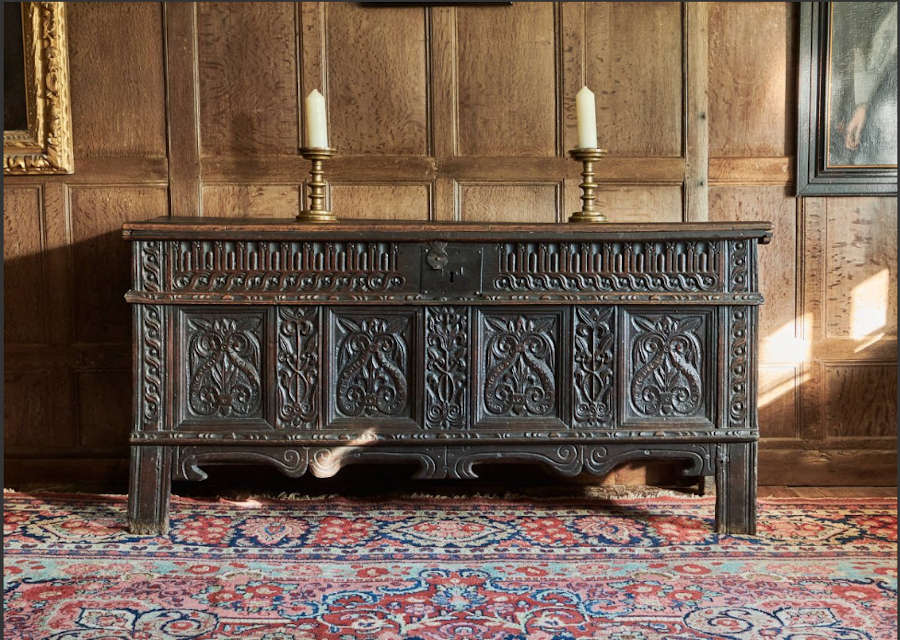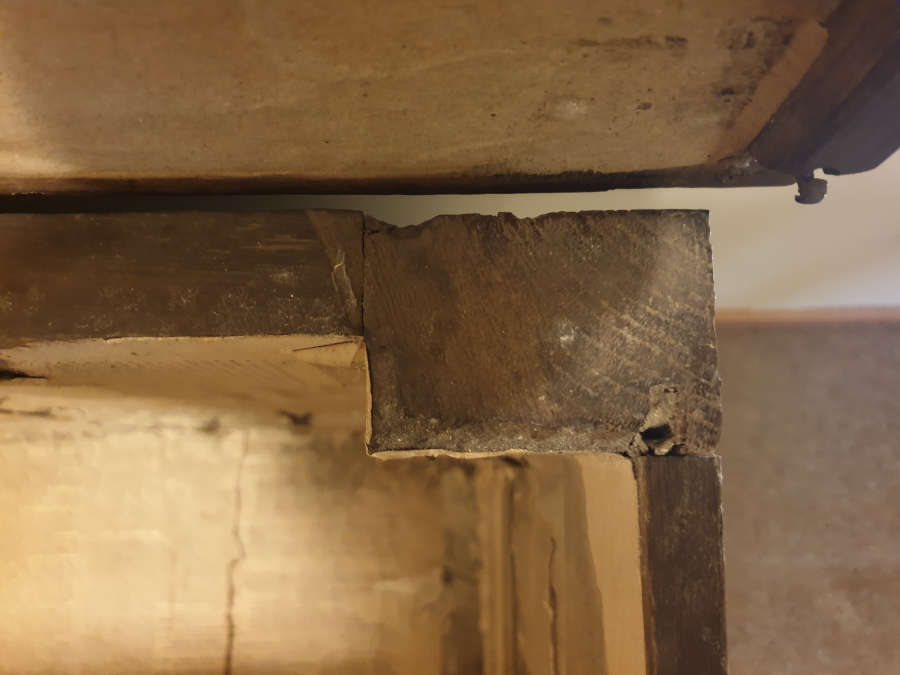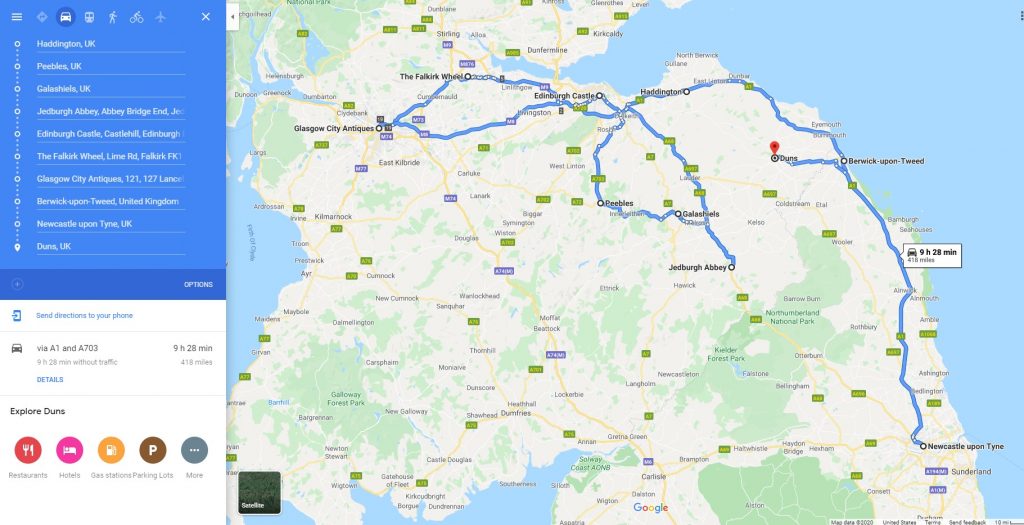I’ve put off writing about this because I was waiting for our shipment to arrive from the UK so I could reference some of this first hand.
One of the types of furniture that I found in the UK that piqued my interest was the oak coffer. Since the middle ages, the oak coffer or oak chest has been an essential piece of furniture for a household and not only served as storage but as a seat. The earlier coffers were primarily plank construction, something that changed during Elizabeth I (1558 – 1603) when panelled coffers became more popular. (English Furniture, Its Essentials and Characteristics by John C. Rogers, Published by Offices of Country Life, 1923)




While in the UK, I rarely saw the earlier plank chests (I saw a few later 20th century versions), but I did see quite a few of the panelled chests. Once I started looking at them more closely I realized that they are similar to the oak chests that Peter Follansbee has been talking about for quite some time. When I re-watched an episode of “The Woodwright’s Shop” it really motivated me to look into this type of antique and how they were made. In this episode, Mr. Follansbee had observed that there were grooves in the top of the stiles that didn’t seem to make sense.

The groove itself is for the panel to ride in and is only needed between the mortises for the rails. Functionally there would be no reason for the groove to go all the way to the end of the stile. Mr. Follansbee went on to show how the rear portion of the skate (or runner) of the plow plane would ride too high for the iron to cut the groove unless you cut a groove for the skate to ride in.

I had seen this episode many times before but I’d never had a chance to look at any old coffers up close. Since then, I’ve seen dozens and we also own one that was made in the late 17th century (about 1670). I’ve found that many of the panelled construction coffers do show these grooves to some extent, however, the age of these pieces and the fact that many have been repaired at a much later date can wipe out some of these clues.

The following are of my coffer that just arrived, so I was able to take better pictures.




It’s been incredibly exciting to be able to find supporting evidence for this process and even more exciting to be able to handle so many of these pieces. I’ll be following up with more on the oak coffer since I’ve found many more interesting things in mine. I’ve also been sorting through my photographs of all the others and continually find new and interesting things.








